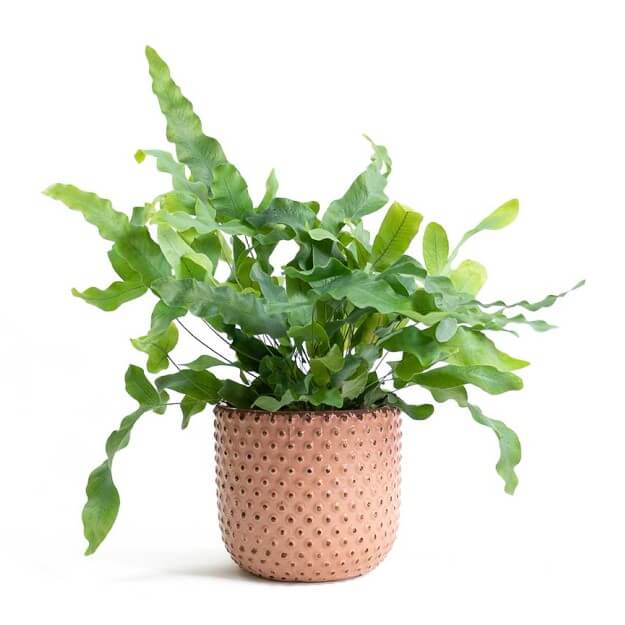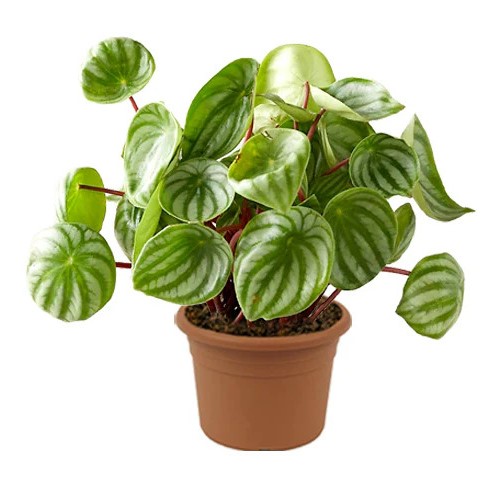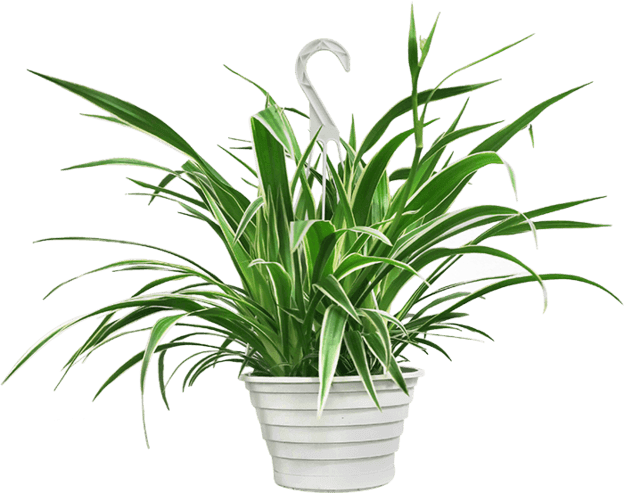Let’s face it, bathrooms often get the short end of the stick when it comes to decorating.
They’re primarily functional spaces, but they can also be transformed into a haven for relaxation and self-care.
As a passionate plant enthusiast who has turned my own bathroom into a verdant escape, I’m excited to share my top houseplant picks that will not only survive but thrive in your bathroom’s unique environment.

Why Should You Consider Plants for Your Bathroom?
Incorporating plants into your bathroom décor isn’t just about aesthetics; it’s about creating a healthier, more inviting space.
Whether you’re looking to transform your bathroom into a lush hideaway or improve its air quality, there are several compelling reasons to consider adding some greenery.
Here’s why integrating plants into your bathroom can be a wonderful choice:
Humidity
Bathrooms naturally offer high humidity levels, ideal for many tropical plants that crave moisture.
Aesthetic Appeal
Plants add life, color, and texture to otherwise sterile bathroom spaces, creating a spa-like atmosphere that can be enhanced by selecting the right plants for good feng shui.
Air Purification
Certain plants not only enhance the air quality within your bathroom but also possess unique properties to absorb bad odors, making your space both fresher and more inviting.
What to Consider When Selecting Plants for Your Bathroom
Selecting the right plants for your bathroom involves more than just picking what looks good.
To ensure that your plants not only survive but thrive, it’s important to consider several environmental factors specific to your space.
From the amount of natural light available to the safety of your furry friends, here are some key factors to keep in mind before you start greenifying your bathroom:
Light Availability
While all recommended plants tolerate low light, some, like the Spider Plant and Aloe Vera, prefer brighter conditions.
Assess your bathroom’s natural light and choose accordingly.
Pet Safety
Research the toxicity of plants before introducing them to a home with pets.
Peace Lilies, ZZ plants, and Pothos can be toxic if ingested.
Humidity and Temperature
Most plants mentioned thrive in humid environments.
If your bathroom is dry, consider a humidifier or pebble tray.
Also, be mindful of temperature fluctuations and cold drafts.
Best Houseplants for Your Bathroom
I’ve experimented with various plants in my bathroom and I am eager to share my top picks for houseplants that flourish in the typically humid and low-light conditions of most bathrooms.
Bird’s Nest Fern
One of my personal favorites is the Bird’s Nest Fern.
Its vibrant green, ripple-edged fronds unfurl like a lush crown, adding a touch of the tropics to any bathroom.

While ferns can be a bit finicky, the Bird’s Nest Fern is surprisingly forgiving and can handle a bit of neglect.
Just make sure it has adequate light and avoid overwatering, and it will reward you with its stunning presence.
Blue Star Fern
For those with brighter bathrooms, the Blue Star Fern is a showstopper.

Its silvery-blue fronds add a touch of cool elegance, making it a unique addition to your plant collection.
This fern, like others in the ‘footed fern’ family, can also tolerate slightly drier conditions than their more delicate cousins.
Asparagus Fern
Despite its name, the Asparagus Fern is not actually a fern but rather a member of the lily family.
This plant, with its delicate, needle-like foliage, adds a sense of airiness and texture to your bathroom.

It enjoys bright light and tolerates a range of humidity levels, making it a versatile choice for your bathroom oasis.
Watermelon Peperomia
Peperomias, with their fleshy leaves and succulent nature, are well-suited to the bathroom’s humid conditions.
The Watermelon Peperomia, with its striking striped leaves resembling its namesake, is a personal favorite.

Place it in a bright spot, and watch it add a pop of color and texture to your bathroom.
Remember, as a succulent, it prefers its soil to dry out between waterings, so resist the urge to overwater.
Snake Plant
Snake plants are practically indestructible.
They tolerate low light like champs and don’t need frequent watering.

Plus, their upright, architectural leaves add a touch of modern elegance to any bathroom.
I have a beautiful Moonshine Snake Plant in my bathroom, and its silvery-green leaves always look fresh and vibrant.
ZZ Plant
For the ultimate low-maintenance option, look no further than the ZZ Plant.
Its glossy, dark green leaves and upright growth habit make it a striking addition to any bathroom.

This plant thrives in low light and requires infrequent watering, making it perfect for those who may not have a green thumb.
Warning
While the toxicity of ZZ plants is relatively low compared to other toxic plants, it is still recommended to handle them with care, especially around children and pets.
Pothos
Pothos is another low-light superstar.
This vining plant comes in a variety of colors and can be trained to climb or cascade down shelves, making it a versatile option for bathroom décor.

I have a Golden Pothos trailing down from a hanging planter, and it adds a touch of whimsy and life to the space.
Warning
Pothos plants are toxic to pets, so it is essential to keep these plants out of their reach.
The toxicity is due to the presence of insoluble calcium oxalate crystals in the leaves and stems of the plant.
Peace Lily
Peace lilies are a classic choice for bathrooms.
They enjoy humidity and can tolerate low light, although they bloom best with a bit more brightness.

Their elegant white flowers add a touch of serenity to the bathroom, making it feel like a true retreat.
I keep mine near the window to encourage blooms, and it never fails to brighten my day.
Warning
It is advisable to keep Peace Lilies away from areas accessible to pets to prevent any potential harm.
These plants contain insoluble calcium oxalates that can cause oral irritation, intense burning, excessive drooling, vomiting, and difficulty swallowing if ingested by pets.
Spider Plant
Spider plants are known for their resilience and adaptability, making them a perfect choice for even the most novice plant parent.
They thrive in low-light conditions and are incredibly forgiving when it comes to watering.

Their arching foliage and cascading “spiderettes” (baby shoots) create a beautiful display, adding life and visual interest to your bathroom.
Plus, they’re natural air purifiers, helping to keep your bathroom environment fresh and clean.
Dieffenbachia
Dieffenbachias are tropical beauties with large, variegated leaves in shades of green, white, and even yellow.

They add a vibrant pop of color and texture to the bathroom, creating a lush, tropical vibe.
My Dieffenbachia sits on a shelf near the shower, and its leaves seem to glow in the soft light.
Polka Dot Plant
This adorable plant, also known as the Hypoestes, boasts speckled leaves in shades of pink, red, and white.

It’s a smaller plant, perfect for window sills or shelves, and its playful colors add a cheerful touch to the bathroom.
I love how the pink speckles on my Polka Dot Plant add a touch of whimsy to the otherwise green space.
Maranta
Marantas are known for their striking patterned leaves, often resembling stained glass.

They love humidity and do well in low-light conditions, making them ideal for bathrooms.
Just be mindful to keep their soil consistently moist, as they can be a bit sensitive to drying out.
My Maranta brings a touch of the exotic with its intricate leaf patterns, and it truly thrives in the bathroom’s humidity.
Aloe Vera
Aloe Vera is a succulent known for its medicinal properties, but it also makes a unique and attractive addition to a bathroom.

While it prefers brighter light, it can tolerate lower light conditions and enjoys the humidity.
Just be careful not to overwater it, as with most succulents.
My Aloe Vera sits on the window sill, and its plump leaves are always there if I need a bit of soothing gel.
Orchids
Orchids are the epitome of elegance and bring a touch of the exotic to any room.

While they require a bit more care than some other plants, their stunning and long-lasting blooms make the effort worthwhile.
The humid environment of a bathroom is actually ideal for orchids, as they naturally grow on bark rather than in soil and prefer moist conditions.
Just be careful not to overwater them!
Air Plants
Air plants, also known as Tillandsia ionantha (Sky Plant) or Tillandsia xerographica (King Air Plant), offer a unique and low-maintenance way to add greenery to your bathroom.

These fascinating plants absorb moisture and nutrients from the air, eliminating the need for soil.
Simply mist them regularly and provide them with bright, indirect light, and they’ll reward you with their unique shapes and textures.
Bromeliads
If you’re looking for a pop of color, look no further than the vibrant bromeliad.
These tropical plants, with varieties like Guzmania or Vriesea, boast captivating colors and patterns.

Bromeliads thrive in humid environments and prefer bright, indirect light, making them a perfect fit for most bathrooms.
With proper care and attention (their central cup should be kept filled with water), they’ll reward you with long-lasting and captivating beauty.
Tips for Creating a Plant-Filled Oasis
Transforming your bathroom into a lush oasis doesn’t just enhance its appearance—it turns your daily routine into a rejuvenating experience.
By incorporating plants effectively, you can create a serene sanctuary that offers both visual beauty and a natural, calming atmosphere.
Here’s how to strategically place, care for, and maintain plants in your bathroom to create a vibrant, green space:
Placement
Utilize shelves, hanging baskets, window sills, and even the floor to create a multi-level plant display.
Consider the mature size of each plant and its growth habit.
Containers
Choose pots that complement your bathroom décor and ensure proper drainage.
Opt for materials like ceramic or plastic that retain moisture.
Watering and Care
Research the specific needs of each plant and establish a watering schedule.
Remember, overwatering is a common pitfall.
Adjust watering frequency based on the season and your bathroom’s humidity.
Regular Maintenance
Prune plants as needed, remove dead leaves, and watch for any signs of pests or diseases.
Wipe down leaves occasionally to remove dust and improve their appearance.

